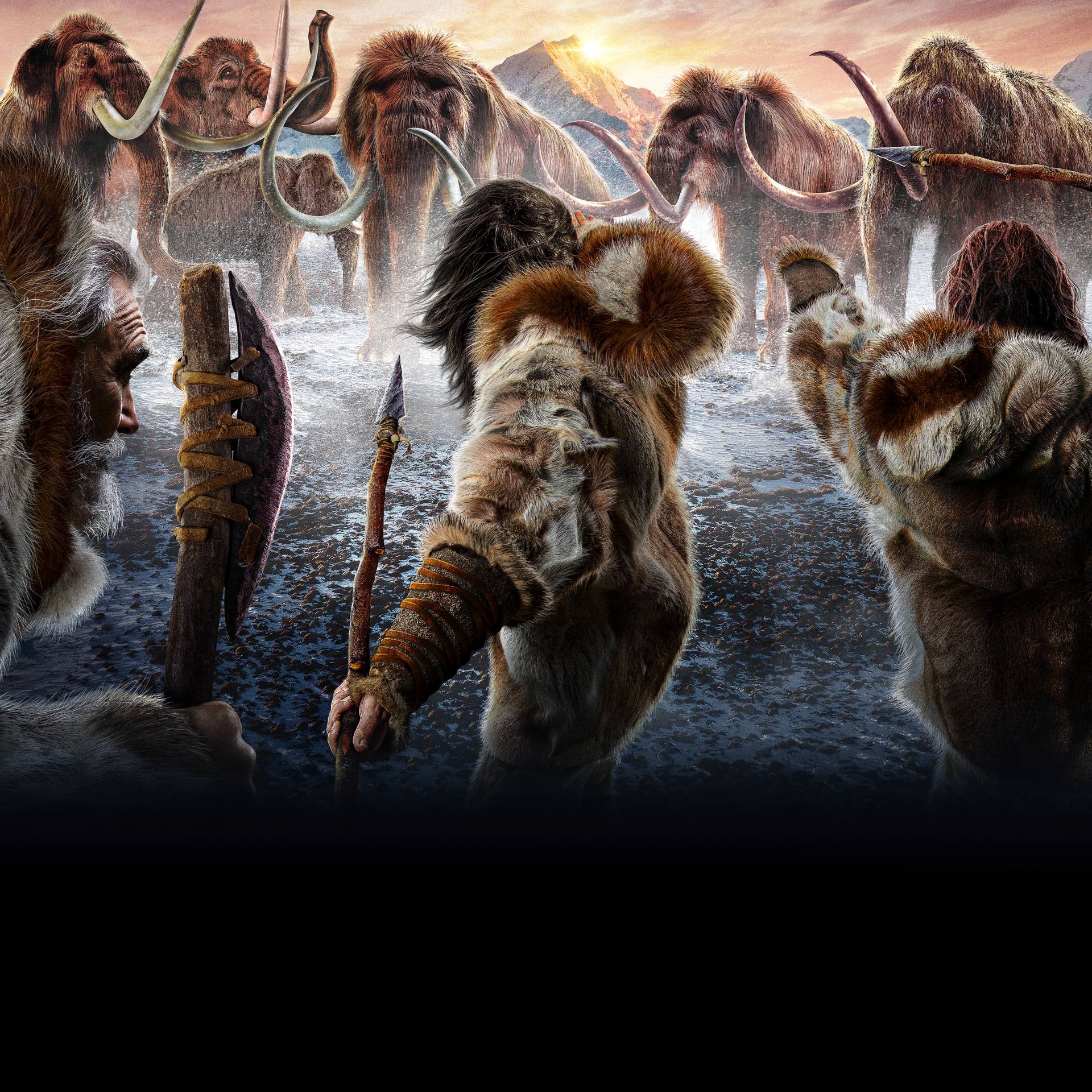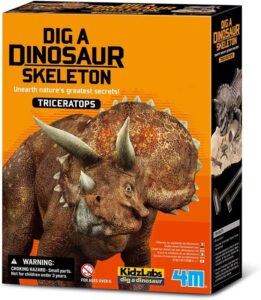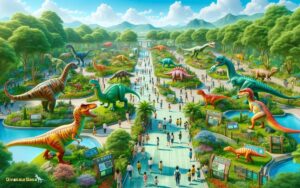What Killed Dinosaurs Ice Age: Unveiling the Mystery
Dinosaurs were wiped out by a massive asteroid impact, not an ice age. This extinction event occurred around 66 million years ago.
Understanding what led to the disappearance of dinosaurs remains a subject of endless fascination and significant study. The asteroid hit the Earth with such force that it triggered a series of environmental changes, ultimately resulting in a mass extinction. These ancient beings, once the dominant lifeforms on our planet, saw their reign ended by this catastrophic event, which paved the way for mammals and eventually humans to rise.
Exploring this pivotal moment in Earth’s history helps us appreciate the fragile balance of our planet’s ecosystem. The asteroid theory is now widely supported by a breadth of scientific evidence, including a layer of iridium-rich sediment around the globe and the discovery of the Chicxulub crater in Mexico. This event underscores the vulnerability of all species to global disasters.

A Glimpse Into The Past
A Glimpse Into the Past unearths the mystery behind the extinction of dinosaurs. Understanding this prehistoric event offers insight into Earth’s climatic changes. Let’s explore how these majestic creatures met their fate and how an Ice Age fits into the puzzle of the past.
The Dawn Of Dinosaurs
Dinosaurs first appeared over 230 million years ago. They thrived in a world completely different from today. As we dig through fossil records, the Dawn of Dinosaurs reveals a time when these reptiles began their reign.
- Triassic period: Birth of the first dinosaurs
- Small size beginnings: Early forms were not the giants we imagine
- Varied habitats: From lush jungles to dry deserts, dinosaurs adapted
Dominance And Diversity
Following their emergence, dinosaurs became planet Earth’s dominant terrestrial vertebrates. This era showcased a wide variety of species. Each evolved unique traits to survive.
| Period | Characteristics |
|---|---|
| Jurassic | Gigantic herbivores and fierce predators |
| Cretaceous | Flowering plants rise, complex ecosystems develop |
Despite the cold Ice Age theory, strong evidence suggests a different cause. A massive asteroid impact and volcanic activity likely spelled the dinosaurs’ doom. This catastrophic end led to a massive shift in Earth’s biodiversity 65 million years ago.

Credit: www.discoveryplus.com
Mass Extinctions Before The Ice Age
The mystery of dinosaur disappearance often leads to the Ice Age. What many don’t know is that Earth witnessed several mass extinctions before this icy period. The extinction that killed the dinosaurs, named the Cretaceous-Paleogene (K-Pg) event, happened long before the Ice Age. Several other mass extinctions fundamentally altered life on Earth, setting the stage for new forms of life to emerge. Let’s dive deep into the history before the Ice Age to understand the prehistoric mass die-offs and patterns of extinction that reshaped our planet.
Prehistoric Mass Die-offs
Earth’s history is littered with massive die-offs. Before dinosaurs ever roamed, life on Earth faced periods of rapid decline. Major events like volcanic eruptions, shifting continents, and changes in atmospheric content played roles. These die-offs cleared the way for dinosaurs to rise.
- The Ordovician-Silurian saw marine life nearly wiped out 444 million years ago.
- During the Late Devonian, 75% of species vanished 375 million years ago.
- The Permian extinction, the most severe, ended 96% of marine species 252 million years ago.
Patterns Of Extinction
Patterns in these events reveal Earth’s resilience. Each extinction event has common causes such as climate change, impact events, and volcanic activity. Species that adapt survive and thrive.
- Volcanic eruptions often triggered global cooling or warming.
- Asteroid impacts caused dust to block the sun, killing plants and the animals that ate them.
- Sea levels rose and fell, changing habitats drastically and quickly.
These patterns show that mass extinctions are complex. They can pave the way for new species. The dinosaur extinction was just one of many transformative events in the history of life on Earth.
The Ice Age Hypothesis
The Ice Age Hypothesis presents a chilling theory for the end of the dinosaurs. Some scientists once believed a dramatic drop in temperatures could explain their sudden disappearance. This hypothesis takes us back to an Earth wrapped in sheets of ice, where the survival of these giant reptiles seemed unlikely.
Climate Change And Glaciation
Climate shifts play a huge role in the Earth’s history. An Ice Age represents a time when large areas of the planet were covered in ice and snow. These conditions make life tough for any creature, especially dinosaurs used to warmer climates.
- Expanding glaciers could crush and reshape landscapes.
- Cold temperatures can halt the growth of plants dinosaurs ate.
- Sea levels would drop, changing how and where dinosaurs could live.
Effects On Dinosaur Habitats
Imagine a world where lush jungles turn into icy deserts. The dinosaurs’ homes changed quickly and dramatically. Food became scarce. Water sources froze or dried up. Dinosaurs faced tough choices: adapt, move, or die.
| Pre-Ice Age | During Ice Age |
|---|---|
| Abundant Food | Food Shortage |
| Warm Climates | Extreme Cold |
| Diverse Ecosystems | Less Biodiversity |

Credit: www.walmart.com
The Chicxulub Impact Event
Many years ago, something massive happened that changed our world forever. This event is known as The Chicxulub Impact Event. It led to the end of the age of dinosaurs. Let’s dive into the details of what occurred.
Asteroid Collision Theory
An asteroid, about 6 miles wide, rushed towards Earth. Scientists named this the Chicxulub asteroid. It hit our planet with a force over a million times greater than the most powerful bomb. This impact left a huge crater, now buried under Mexico’s Yucatán Peninsula.
Global Consequences
The asteroid collision did not just leave a crater. It caused problems all around the world:
- Dust and debris: Dust filled the sky, making it dark and cold.
- Firestorms: Bits of the asteroid started fires upon falling back to Earth.
- Tsunamis: Huge waves washed across coastal areas far from the impact.
- Acid rain: Chemical reactions in the atmosphere caused rain to become acidic.
- Climate change: Temperatures dropped, leading to what some believe was a “nuclear winter”.
This chain of events likely caused the mass extinction of the dinosaurs and many other species. The Earth became a very different place.
Volcanic Activity: The Deccan Traps
The catastrophic events that wiped out the dinosaurs may seem like a distant mystery. Among the leading theories, volcanic activity, especially the eruption of the Deccan Traps, holds a critical place in the puzzle of our planet’s history. Let’s delve into how these massive volcanic eruptions might have shaped the Earth’s environment and contributed to the demise of the dinosaurs.
Volcanism And Environmental Impact
The Deccan Traps, located in what is now India, represent one of the largest volcanic provinces in the world. The trap is a term used for stepped layers of solidified basalt, a product of intense volcanic activity. The sheer scale of the eruptions could have drastically changed climate patterns.
- Ejection of Sulphur and Ash: The expulsion of vast amounts of sulphur and ash into the atmosphere likely caused a significant drop in global temperatures.
- Release of Greenhouse Gases: The release of greenhouse gases would have led to long-term warming effects, further destabilizing the climate.
- Impact on Photosynthesis: Reduced sunlight reaching Earth’s surface due to the ash cloud could have disrupted plant photosynthesis, collapsing food chains.
Link To Dinosaur Demise
The timing of the Deccan Traps eruptions closely corresponds with the mass extinction event that included the dinosaurs’ disappearance. This timing suggests a strong correlation.
| Event | Impact on Dinosaurs |
|---|---|
| Volcanic Winter | Colder temperatures could have challenged dinosaur survival. |
| Food Web Disruption | Food shortages from plant die-offs could have led to a ripple effect through the ecosystem. |
| Acidification of Oceans | Made marine life harder, affecting food sources for aquatic dinosaurs. |
While an asteroid impact is often cited as the leading cause of the dinosaurs’ extinction, the role of volcanic activity cannot be overlooked. The Earth’s history is a rich tapestry of cataclysmic events, and the Deccan Traps remind us of the planet’s dynamic nature and its power to shape life’s evolution.

Credit: www.bhutan.ubuy.com
Scientific Investigations
The dinosaurs’ extinction is a puzzle that has long intrigued scientists. Numerous studies reveal that their disappearance from Earth is a tale written in the rocks and fossil records. Experts have delved deep into paleontological and geological evidence to unravel the mystery. Two crucial aspects shine a light on how the reign of these ancient beasts ended abruptly. Let’s explore these aspects.
Paleontological Evidence
Fossils are like history books, telling stories from millions of years ago. They show us changes in dinosaur populations over time. Dinosaur bones, caught in ancient rock layers, are clues for scientists.
- Fossilized remains reveal differences before and after the extinction event.
- Distinct layers of sediment show a sharp decline in diversity.
Studies of fossils across different regions help confirm a global event. This event is likely the Ice Age and it led to the fall of the dinosaurs.
Geological Clues
Earth’s layers tell a tale of shifting climates and cataclysmic events. The key to unlocking the Ice Age mystery lies in these clues:
| Geological Marker | Importance |
|---|---|
| Iridium | A rare element often associated with cosmic impacts. |
| Chicxulub Crater | Impact site in Mexico linking to a massive asteroid collision. |
| Glacial Deposits | Traces of ice sheets advancing and retreating over landscapes. |
These clues suggest that a dramatic climate shift occurred. The shift involved a chilling planet and possibly catastrophic events like asteroid impacts. Such events could have created a domino effect, leading to the Ice Age and the demise of the dinosaurs.
The Survival And Evolution
Did you ever wonder what happened after dinosaurs vanished? Imagine a world undergoing massive change. Ice covered the Earth. The age of dinosaurs ended. But life did not stop. It evolved and brought forth new creatures. This is a story of survival and evolution.
Successors Of The Dinosaurs
The end of the dinosaurs was just the beginning for other species. Small mammals, which were minor players before, stepped into new roles. They grew in size. They explored varied diets. With dinosaurs gone, they had a world to claim.
Let’s meet these creatures:
- Marsupials: Pouched wonders that thrived.
- Placentals: They would one day include us, humans.
- Birds: Direct descendants of dinosaurs that still rule the skies.
Legacy And Lessons
The dinosaurs left a vast legacy. They remind us of the Earth’s dynamic history. They teach us about adaptation and resilience. Fossils guide scientists. They inspire dreamers and creators.
| Lesson | Detail |
|---|---|
| Adaptation Is Key | Survival depends on adapting to the changing environment. |
| Extinction Shapes Evolution | When species vanish, others rise up to fill the voids. |
| Legacy Inspires | Dinosaurs spark curiosity across ages, fostering learning and imagination. |
Conclusion
To sum up, the mystery of the dinosaurs’ demise remains an intriguing topic. Evidence suggests a cataclysmic event, not an ice age, led to their extinction. Studying these ancient behemoths helps us understand Earth’s past and shapes our view of biodiversity today.
Let’s preserve their story and our planet’s rich history.




